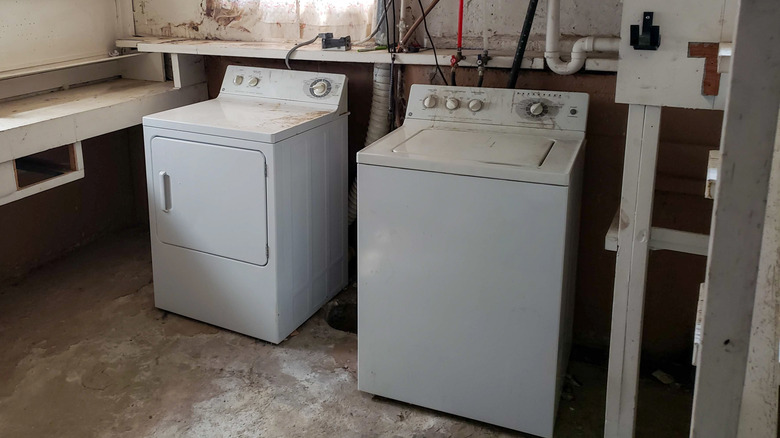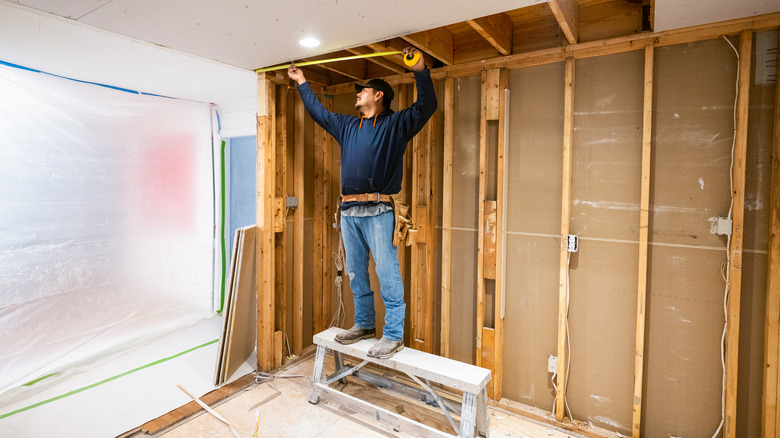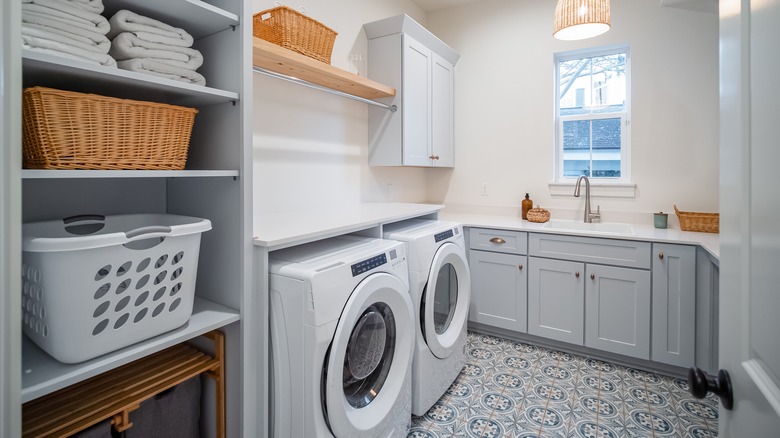Key Things To Consider Before Moving Or Adding A Laundry Room In Your Home
For many of us, it's more fun to look through laundry room ideas that will make you think about a remodel than it is to actually do the laundry. Whether you dread the endless sorting, can't find a stain remover spray that stands up to your kids, or you get tangled up every time you fold a fitted sheet, you're not alone. The never-ending chore goes from bad to worse when your laundry room is located in an inconvenient spot in your home. A corner in the garage can make the menial task too cold in the winter or too hot in the summer. Carrying heavy laundry baskets down multiple flights of stairs to a basement can be just as bad. And don't even get us started on the laundromat life that requires more quarters than we can count. According to Sean Kurtz, President of Michigan Rose Construction, there are many good reasons to move or add a laundry room in your home, but you'll need to consider the overall cost, convenience, and the capabilities of your core plumbing and electrical systems before you begin the process.
"The most important thing to consider when relocating or installing a laundry room is plumbing," Kurtz told House Digest during an exclusive interview. The construction expert explained that it all comes down to budget. "If you're moving your laundry room to another space and there is already plumbing nearby — like a kitchen or bathroom — the cost can be significantly lower," he said. "However, if you have to put in an all-new 3" sewer drain line through your residence ... the price tag can exceed $3,000."
Be realistic about your budget before embarking on this major project
In his exclusive interview with House Digest, Sean Kurtz also said that your home's electrical system and structural integrity are key considerations. "The biggest cost increase comes when there isn't enough space on your electrical panel to add a new circuit," he explained. "Panel upgrades can run $5,000 or more, depending on the complexity of the job. Planning ahead to ensure there's adequate capacity can help avoid costly surprises." Kurtz also advised considering the structural integrity of your home, especially if you plan to relocate your laundry to an upper floor. "Ensure the floor can carry the weight of the appliances," he said. The construction expert also recommended adding insulation to reduce noise if your new laundry will be located near a bedroom. "This little investment can pay dividends in the long term," he added.
There are many reasons you may want to create a functional laundry room. But budget is an especially important consideration. "The financial aspect can't be ignored," the construction expert said. "Make sure you factor in the plumbing, electrician, and structural adjustment costs," he added. It's important to be realistic when it comes to the overall expense of this major project, and you should think twice if a new laundry will require tearing out tons of drywall or investing in an expensive new electrical panel. "Relocating a laundry room can be a long-term process, from fairly simple to a logistical disaster, so ensure you are aware of the work involved and the cost before you make your decision," Kurtz cautioned.
Choose the right location by utilizing an underused area
"Choose the right location," Sean Kurtz told House Digest during his exclusive interview, adding that putting a new laundry room just "'anywhere' will not do." From selecting a convenient spot that's easy to access to installing appliances with the right capacity and features for your family, efficient and stylish laundry rooms make it more fun to do one of the most dreaded chores. "Take this opportunity to design the space how you've always wanted it," Kurtz recommended. "Will it include custom cabinets, folding areas, or a countertop for sorting clothes? Now's the time to plan for that."
The construction expert told us the best location for a new or relocated laundry room is in an underused area. "Think of how handy it would be to repurpose an empty room as a laundry room," Kurtz explained. "If you have an unused area like a big pantry or closet, you can convert it into a laundry room and increase the usability of your home," he added. Kurtz advised against repurposing any spaces that are already functional, like a guest room or home office, or even part of a room, like a mudroom. "A room's usefulness must be nearly zero before you consider converting it."
Once you've picked the perfect place, Kurtz said the next steps are to inspect the plumbing, electrical, HVAC, and structural soundness. "Ensure the space has the capability of supporting your new laundry room's plumbing and electrical requirements," he recommended. This includes making sure you can either access or install a gas line or a 240V outlet, based on what your washer and dryer require.


